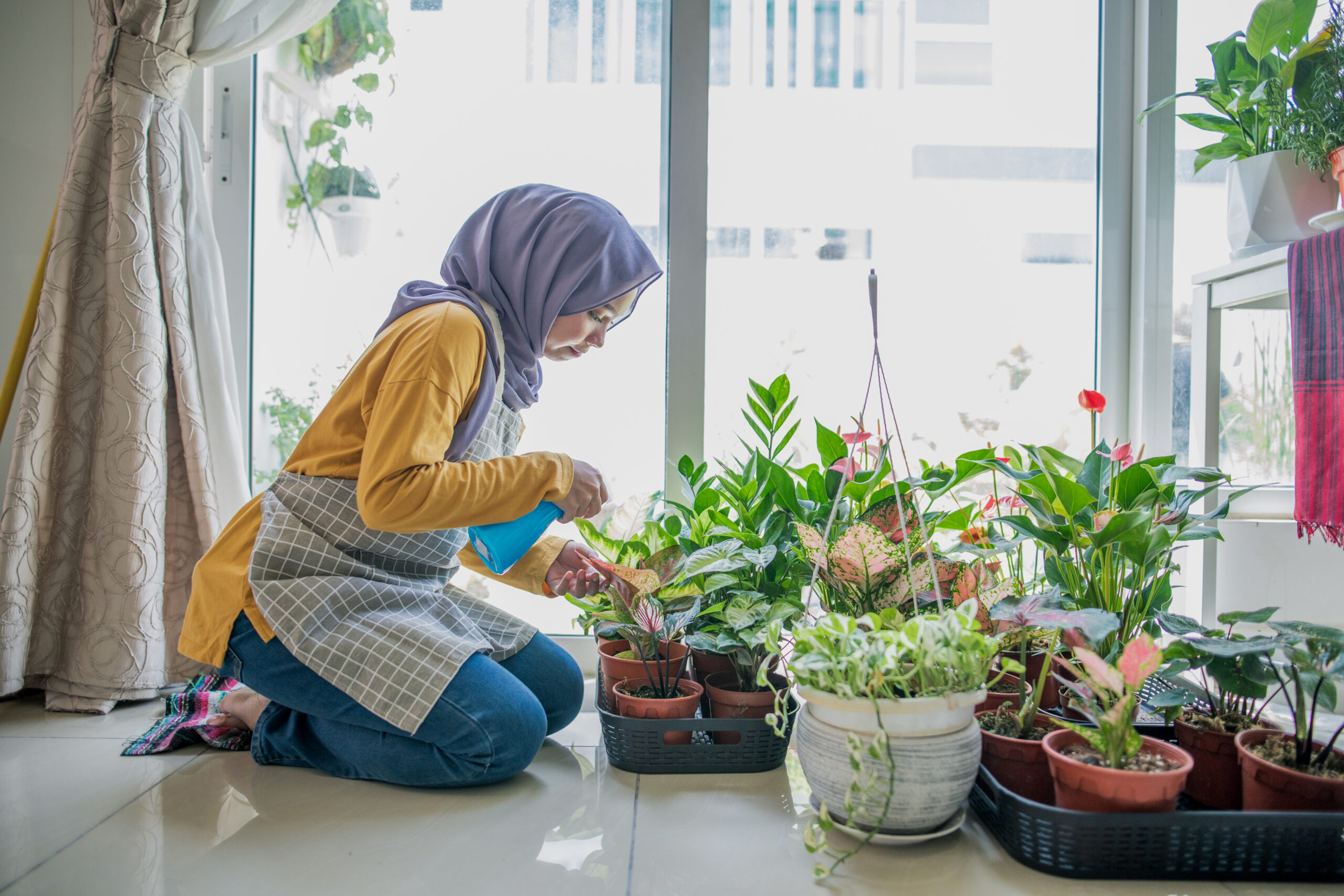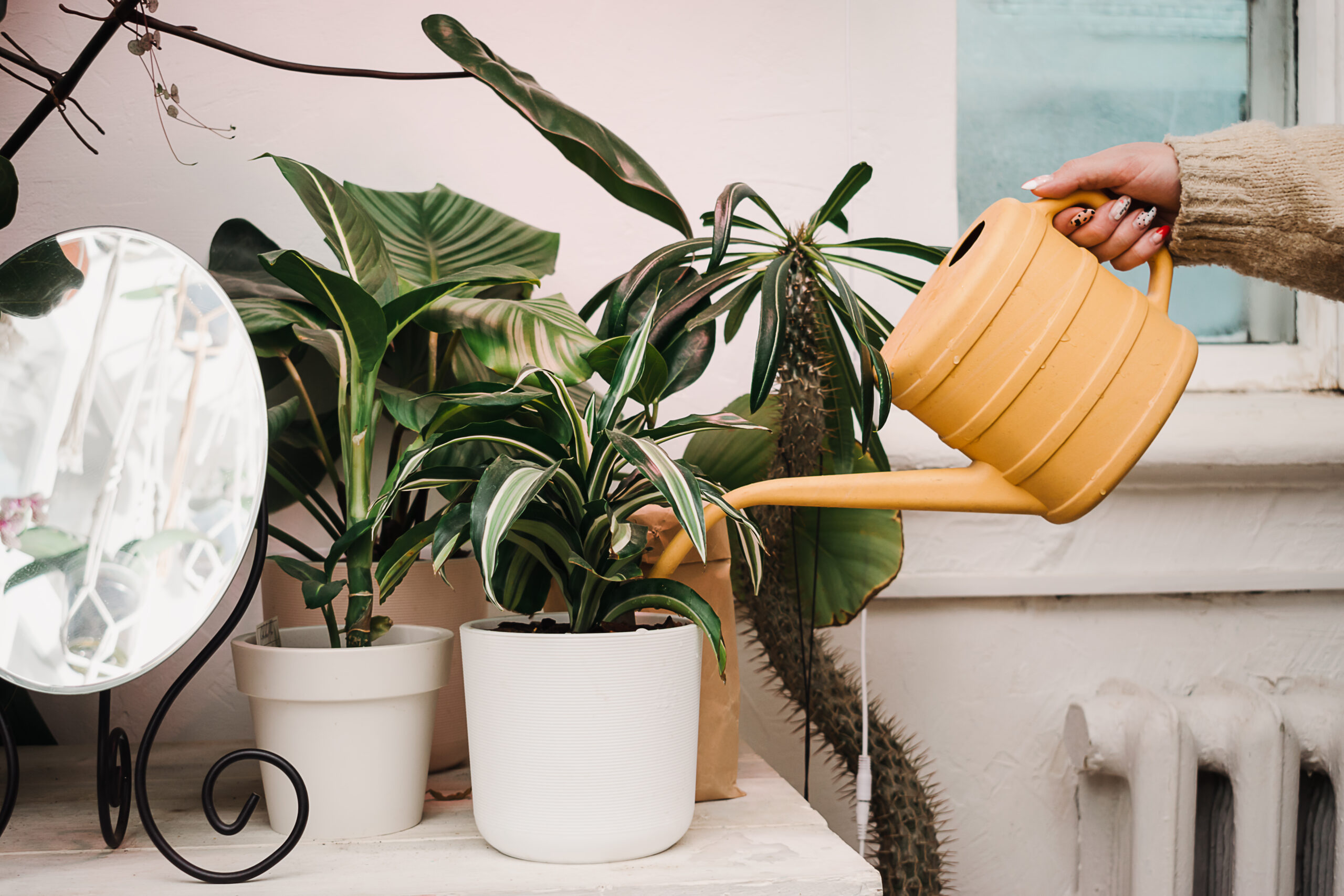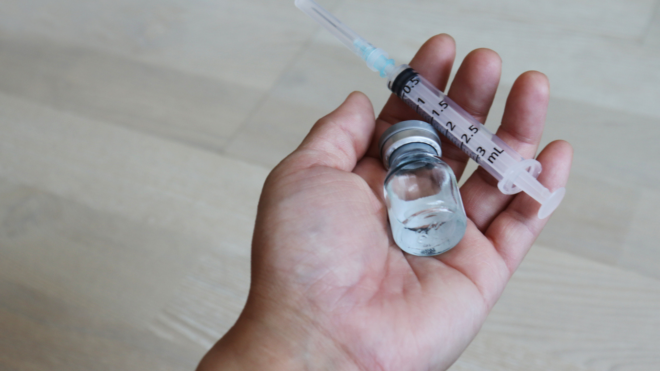
One of the best things about late spring and summer is being able to tend to gardens outside. For many people, this time is therapeutic. Spending time in the sun and dirt and keeping up with weeding and fertilizing can be a perfect form of self-care. Plus, we get to enjoy the fruits of the effort — whether with beautiful gardens of bright colors and lush greens or vegetables that we get to eat at dinnertime.
When the season ends, the therapy with gardening doesn’t have to stop. Houseplants can be just as therapeutic, and with them being inside, we don’t have to rely on the season or the weather. But it’s essential to know the subtle but important differences in caring for houseplants during the summer than in the winter — even though they’re inside. Plants go into a hibernation phase, too.
For anyone just starting with houseplants or who didn’t have much luck last winter, here are 15 tips to help keep plants living their best lives.
Keep Them Warm But Not Too Warm

Even though houseplants live inside, they aren’t “on” all around the world. Plants often go into a hibernation phase, typically in the winter, when they don’t grow as much and maybe don’t flower. In the winter, keep the room warm — but don’t go too hot or too cold.
Use Warm Water

Just as our houseplants like the warmer atmosphere in the home, that’s true for the water as well. Anything too cold might shock the plant, and no one likes to be shocked. So warm water is more easily tolerated for houseplants and helps keep other things in line, such as humidity.
Clean the Windows

Even though our plants are inside, they still need to have plenty of sunlight to help keep them healthy. To give them the best boost of sunlight while they’re inside, make sure the windows they’re placed in front of are clean, both inside and out. It will help ensure they’re getting the most light they can.
Increase the Humidity

Because most plants enjoy a warmer climate, which is why they do so well in the summer, we can mimic some of that heat in the winter, too. Increasing the humidity in the house or the room where the plants are chilling out can be the perfect boost they need to stay healthier in the colder months.
Water Them Less

“Dormant plants need very little water — too much and they’ll either produce soft, weak growth or will rot as water accumulates in the compost,” Gardeners’ World suggests. “For most house plants, reduce watering to once every [two weeks].”
Clean Your Plants

It sounds weird, but it makes a difference. Plants collect dust and other things, which can reduce the leaves’ ability to soak up the sunlight they need, which can be incredibly impactful when there’s less sunlight during the winter months. Dust on the leaves may also encourage disease, and we don’t want that.
Keep Them Away From Heating Vents & Drafts

Another simple way to keep houseplants as happy as possible is to be aware of the room they’re in and keep them away from drafts from windows or heating vents. Houseplants do better when the temperature isn’t all over the place.
Group Plants Together

People do better in crowds, especially when cold, and the same is true for plants. So in the winter, it’s wise to group the plants to regulate each other in a way. We don’t want it to be too crowded that the plants are competing for window or sun space, but just enough that they’re benefiting from the others.
Add a Pebble Tray

Since plants are happier when the air is humid, a few things can be done to help without having to humidify the whole house. Adding a pebble tray for the plant to sit on helps keep a good humidity level in the air. They're not hard to put together and they have the benefit of looking good in the room, too.
Don’t Fertilize

Fertilizer is plant food, and it can help them grow big and strong. But don’t make the mistake of adding fertilizer to the houseplants in the winter. "Houseplants are not in a state of active growth during the winter and therefore should not be fertilized," advises Savvy Gardening. "Doing so can lead to fertilizer burn and brown leaf tips."
Move Them Close to a Window, But Not Too Close

Moving our houseplants to sit near windows is a great way to boost the chances of them staying happy during the winter. But it’s important to note that it's important not to place them too close to a window where the temperature fluctuates a lot. Place them close enough that they’re in the light but not too close to feel any cold air.
Add Artificial Light

If there aren’t big windows in the house, or little sunshine comes in, artificial light is another option. Of course, some plants do better than others with artificial light, but the setup doesn’t have to be as big as we envision when we think artificial light. It could be as simple as a single lamp to make a big difference.
Don’t Repot Unless Absolutely Necessary

Repotting our plants might seem harmless, other than us getting dirty hands, but it can be stressful for our plants. Specifically, the roots don’t enjoy being pulled out of the pot and having to make a new home. In the winter, repotting should only be done when necessary since the winter months are more stressful for houseplants.
Rotate Your Plant Pots

“A good rule of thumb, and an easy way to add the rotation of houseplants to your routine without adding too much strain on your memory, is to give your plant a quarter turn every time you water it,” Gardening Know How advises. Doing this helps ensure every part of the plant gets some time in the sun by the window.
Play Music

It sounds funny, yes, but studies have shown that plants like classical music. It doesn’t have to be loud, and some don’t believe that it makes a difference. But if a little classical music might mean the difference between a happy or sad plant, it’s worth it. Also, there are added benefits for us humans, too.




